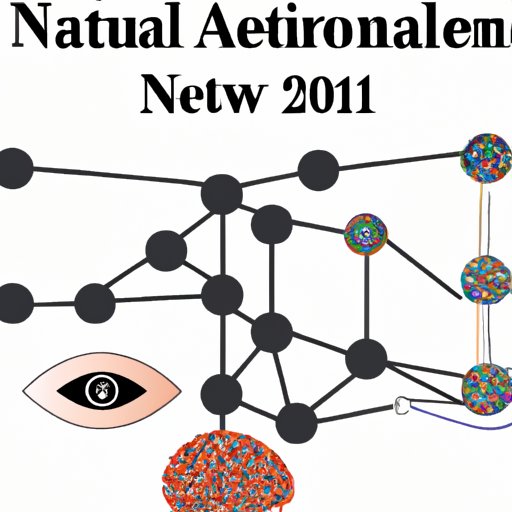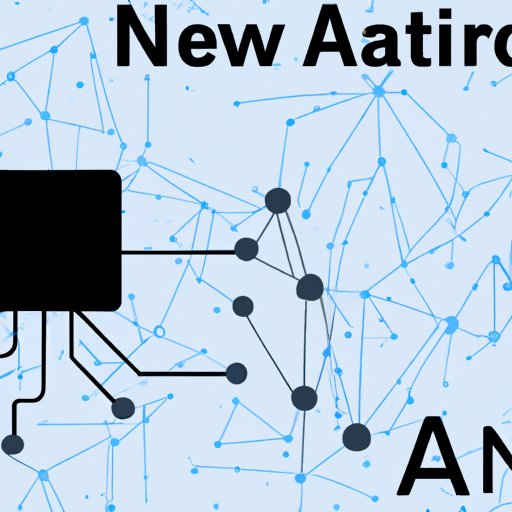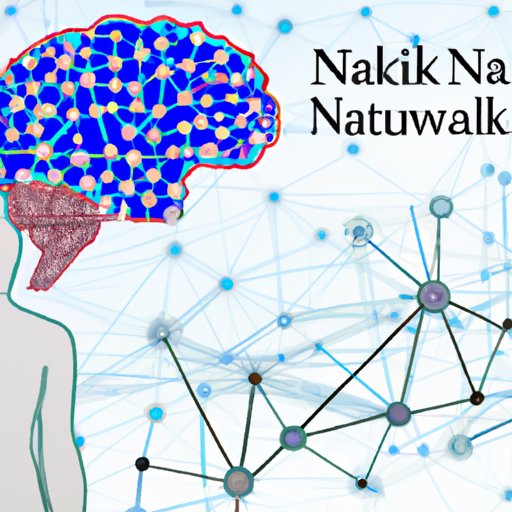Introduction
What is a neural network in artificial intelligence? This question may seem daunting to some, however, understanding the basics of neural networks is essential to grasping the complexities of artificial intelligence (AI). This article will provide a thorough overview of the essential components of neural networks in AI, as well as discuss how neural networks are used in AI applications.

An Overview of Neural Networks in Artificial Intelligence
In order to understand what a neural network is in artificial intelligence, it is important to first define the concept. According to Merriam-Webster, a neural network is “an artificial intelligence system made up of layers of connected nodes that process information by responding to external inputs, relaying information between each node.” In other words, a neural network is a type of machine learning algorithm modeled after the structure of the human brain.
Neural networks can be categorized into two broad types: feed-forward and recurrent. Feed-forward neural networks, also known as multilayer perceptrons, are the most common type of neural network. They consist of an input layer, one or more hidden layers, and an output layer. The input layer receives data from the environment, which is then processed by the hidden layers. Finally, the output layer produces a result based on the data received from the input layer.
Recurrent neural networks, on the other hand, are designed to capture patterns over time. They are composed of interconnected neurons, where each neuron contains a memory state and can accept multiple inputs. This allows them to learn complex relationships between data points, making them particularly useful for tasks such as handwriting recognition and speech recognition.
Understanding the Basics of Neural Networks in AI
In order to understand how neural networks work in AI, it is important to understand the basic components of a neural network. A neural network consists of neurons, connections, weights, biases, and activation functions. Each component plays a role in the functioning of the neural network.
Neurons are the basic building blocks of a neural network. They are essentially mathematical functions that receive inputs from other neurons, process the data, and produce an output. The connections between neurons are the pathways through which information flows. The strength of the connection is determined by the weight assigned to it, which determines how much influence the neuron has on its neighboring neurons. Additionally, each neuron has a bias value, which is a constant number that is added to the output of the neuron.
Activation functions are used to transform the input signals into an output. These functions determine the output of a neuron based on the combination of its inputs and weights. Commonly used activation functions include sigmoid, hyperbolic tangent, and ReLU.
Exploring Deep Learning with Neural Networks in AI
Deep learning is a branch of machine learning that uses neural networks to solve complex problems. It is based on the idea that a computer can learn complex patterns and relationships by analyzing large amounts of data. Deep learning algorithms are able to process data in multiple layers, allowing them to identify patterns and make predictions with greater accuracy than traditional machine learning algorithms.
One of the most commonly used deep learning algorithms is the convolutional neural network (CNN). CNNs are used for image recognition and classification tasks. They are composed of multiple layers, each of which is responsible for extracting features from images. For example, the first layer might detect edges, while the next layer might detect shapes. The final layer combines all the extracted features to classify the image.
Another popular deep learning algorithm is the recurrent neural network (RNN). RNNs are used for tasks such as natural language processing and speech recognition. Unlike CNNs, RNNs have the ability to remember information from previous inputs. This allows them to learn complex temporal relationships between data points, making them well suited for tasks such as predicting stock prices or generating music.

How Neural Networks are Used in AI Applications
Neural networks are used in a variety of AI applications, including image recognition, natural language processing, and autonomous vehicles. Image recognition involves using neural networks to identify objects in images. By training a neural network on a large dataset of labeled images, it can learn to recognize different objects and classify them accordingly.
Natural language processing (NLP) is another application of neural networks. NLP involves using neural networks to understand and interpret natural language. For example, a neural network can be trained to identify the sentiment of a piece of text, such as whether it is positive or negative. This can be used in applications such as sentiment analysis or text summarization.
Autonomous vehicles are becoming increasingly popular, and neural networks are at the heart of these systems. Using neural networks, autonomous vehicles are able to identify obstacles in their path and react accordingly. Furthermore, neural networks can be used to detect lane changes and traffic signs, allowing the vehicle to navigate safely.

The Future of Neural Networks in Artificial Intelligence
Neural networks are rapidly evolving and becoming increasingly powerful. In the future, neural networks will be used in a variety of applications, such as healthcare, cybersecurity, and even gaming. Additionally, advances in hardware will enable neural networks to become faster and more efficient.
However, there are still some limitations to neural networks. For example, they require large datasets to train on, which can be difficult and expensive to obtain. Additionally, they can suffer from overfitting, where they learn too many details from the training data and do not generalize well to new data.
Conclusion
Neural networks are a key component of artificial intelligence, and understanding how they work is essential to mastering AI. In this article, we explored what is a neural network in artificial intelligence, as well as an overview of the problem and purpose of the article. We discussed the basics of neural networks and explored deep learning with neural networks in AI. Finally, we looked at how neural networks are used in AI applications and the future of neural networks in AI.
(Note: Is this article not meeting your expectations? Do you have knowledge or insights to share? Unlock new opportunities and expand your reach by joining our authors team. Click Registration to join us and share your expertise with our readers.)
